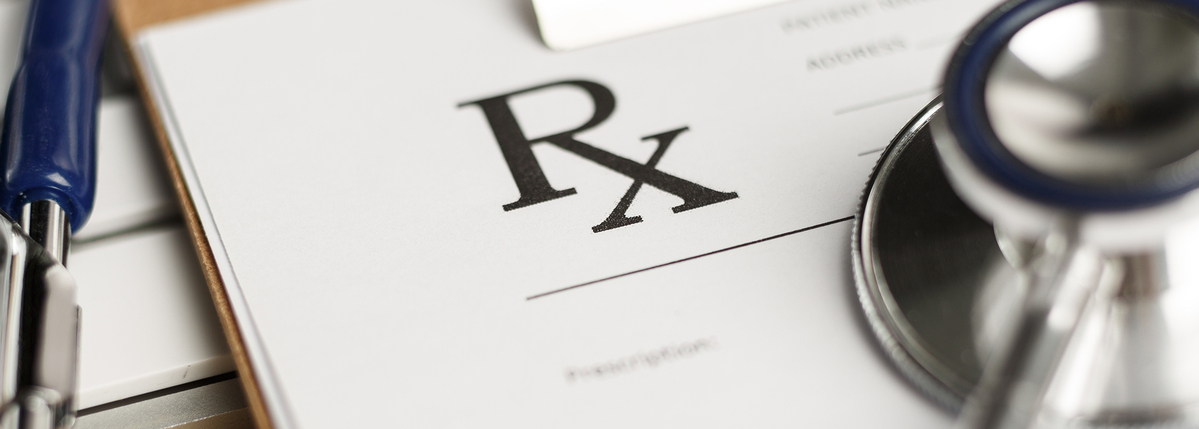If You Take Insulin for Type 2 Diabetes, Your Doctor Should Also Prescribe This…
If you take insulin as a person with type 2 diabetes, you can experience hypoglycemia—also known as low blood sugar. The most severe low blood sugar event can leave you unable to walk, speak, eat, or even drink.
This is why emergency glucagon should be prescribed to anyone taking insulin—whether you have type 1 or type 2 diabetes.
It’s easy for a healthcare professional to assume you’re never experiencing low blood sugars, especially if your A1c is higher than 7.0 percent and you’re struggling with insulin resistance.
Many people with any type of diabetes can go years or decades without ever needing to use emergency glucagon—but it only takes one severe low blood sugar to learn why it’s so important.
Why people with type 2 diabetes need prescriptions for emergency glucagon
Emergency glucagon is a medical tool that can save your life during severe hypoglycemia if you have too much insulin in your bloodstream. Hypoglycemia—low blood sugar—occurs when your blood sugar drops below 3.870 mg/dL. It’s generally caused by too much insulin or not enough glucose (sugar) in your bloodstream.
Without enough sugar in your blood sugar, your brain—and the rest of your body—cannot function properly. Your brain actually relies on a constant supply of sugar in your bloodstream.
When the amount of sugar in your bloodstream drops below 70 mg/dL, you can experience a variety of symptoms.
Glucagon is a hormone that tells your liver to quickly release stored sugar into your bloodstream. If you are becoming severely low, can no longer consume a source of fast-acting carbohydrate like juice, or if you are unconscious and potentially seizing, a friend or family member can use emergency glucagon on you to bring your blood sugar back up to a safe level while also calling 911.
Anyone taking insulin—and some non-insulin diabetes medications—can experience severe hypoglycemia.
While low blood sugar is considered to be rare in type 2 diabetes compared to type 1, it can still happen.
It only takes one severe low blood sugar to make you wish you owned an emergency glucagon treatment. A few examples of when or why you might need emergency glucagon include:
- Taking a “fixed” insulin dose but it’s more than your body needed with that meal
- Having too much insulin active in your system during physical activity
- Forgetting to eat after taking your insulin
- Taking insulin but insulin sensitivity has changed due to changes in weight, diet, activity, etc.
- Vomiting your meal after taking insulin due to illness, food poisoning, etc.
- Accidentally taking the wrong dose or the wrong type of insulin
Some of today’s emergency glucagon products are auto-injectors, much like an epi-pen for someone experiencing a severe allergic reaction. You simply press the device against the skin on their abdomen, thighs, backside or arms, and it auto-injects a large dose of glucagon into their body. Glucagon is also available as a nasal spray.
Does research show that people with type 2 diabetes experience severe low blood sugars?
Yes. But even if severe low blood sugars aren’t as frequent in type 2 as they may be in type 1 diabetes, shouldn’t people with type 2 have the resources to protect themselves properly?
There are two primary reasons why many of today’s healthcare professionals aren’t prescribing emergency glucagon to people with type 2 diabetes taking insulin.
First, many healthcare professionals (HCPs) don’t know about today’s modern emergency glucagon products with auto-inject and nasal options. These options are compact and easy-to-use kits that make it much easier to teach friends and family about using emergency glucagon during a severe low blood sugar.
Secondly, many HCPs may assume that you aren’t experiencing (or at risk of) severe low blood sugars if your A1c is relatively high or you struggle with severe insulin resistance.
There is a variety of research on the prevalence of severe low blood sugars in type 2 diabetes, all with varying results.
- A study in India of 390 people with type 2 diabetes taking insulin found that the prevalence of both mild and severe hypoglycemia was 57 percent, with 10 percent of cases qualifying as severe. The most common cause was taking insulin but missing a routine meal.
- A study in Turkey of 165 people with type 2 diabetes taking insulin found the prevalence of both mild and severe hypoglycemia was about 45 percent of the participants, with approximately 16 episodes per year, compared to 42 episodes per year in type 1 diabetes.
- A study in the United States of 1055 patients with type 2 diabetes found that 16 percent participants using non-insulin medications and 30 percent using insulin experienced hypoglycemia, but only .5 percent (5 actual participants) experienced severe hypoglycemia.
- A study in Scotland of 215 people with type 2 diabetes taking insulin determined that 15 percent experienced severe hypoglycemia. They also concluded that the longer a patient was taking insulin, the higher the risk of severe hypoglycemia.
- The Indian Journal of Endocrinology and Metabolism reports that hypoglycemia among people with type 2 diabetes taking insulin is actually quite high. Approximately 96 percent participants in a study of 366 people reported symptoms of hypoglycemia, most of whom could treat themselves by eating. The study did not note specific blood sugar levels or severity of hypoglycemia, but cases that can be treated with food are usually not severe (but not always!).
This variety of data shows that people with type 2 diabetes taking insulin are experiencing low blood sugars, far more often than many HCPs may think. That’s why it is so important for anyone with type 2 diabetes who takes a blood-sugar-lowering medication to have glucagon on hand.
When should you call 911 instead of using emergency glucagon?
Even if you use emergency glucagon on someone experiencing severe hypoglycemia, you should still call 911, too. But for some people, calling 911 may be more appropriate than trying to use emergency glucagon.
“If a patient with type 2 diabetes is taking insulin, we prescribe emergency glucagon 99 percent of the time,” explains Marcey Robinson, MS, RD, CSSD, CDE, BC-ADM, co-founder of Achieve Health & Performance. “It really depends on the patient’s age, their caregiver’s age and their ability to learn when and how to use glucagon.”
Robinson says many of her patients—and a large percentage of the overall population of people with type 2 diabetes—are at least 70 years old. Using emergency glucagon during the stress of severe hypoglycemia may be more than an older caregiver can handle.
“I had one patient who’s insulin pump failed,” recalls Robinson. “So his wife followed the instructions on how to replace the basal insulin from his pump with an injection of insulin—but she accidentally gave him 60 units of rapid-acting insulin all at once instead of a long-acting insulin.”
When the husband experienced a severe low blood sugar, the wife was surprised because she’d given him several glucose tabs. Understanding when and how to use emergency glucagon would likely be too overwhelming for this household, making an immediate call to 911 would be the best option.
Important to note, however, is that many emergency services in the United States do not carry or are not allowed to use any form of glucagon that requires them to puncture a patient’s skin (like with an auto-injector). Because of this, it is best to still have glucagon on hand so that emergency services personnel can use an individual’s glucagon or help instruct a caregiver on how to use it.
“In certain situations, we tell people and their caregivers to just call 911,” explains Robinson. “Do I like to prescribe it? Absolutely. Is it always going to be the most effective method of handling a severe low blood sugar? Eh, not necessarily.”
The bottom line
Emergency glucagon can save your life when your blood sugar is dangerously low. While calling 911 may be the most appropriate option for certain households caring for a person with type 2 diabetes, the glucagon prescription should still be offered, filled and kept in a known location in the home.
It doesn’t matter how much insulin you take or what your A1c is—if you take insulin via pump, syringe, pen, or inhalation, you can experience a severe low blood sugar.
- Read more: All About Glucagon
- Read more: Stories About Using Glucagon
- Read more: Asking Your Doctor for Emergency Glucagon
- Read more: Getting Glucagon CoPay Cards & Insurance Denials
Educational content related to severe hypoglycemia is made possible with support from Xeris Pharmaceuticals, and editorial control rests solely on Beyond Type 2.





